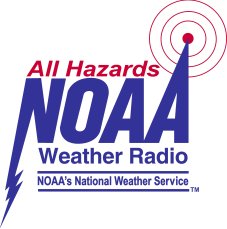National Weather Service for World Wide Weather Coverage
The National Oceanic and Atmospheric Administration’s (NOAA’s) National Weather Service (NWS) serves the people of the United States every day.
They are the sole U.S. official voice for issuing warnings during life-threatening weather situations. They provide weather, water, and climate forecasts and warnings for the United States, its territories, adjacent waters and ocean areas, to protect life and property and enhance the national economy.
Weather services cost each American about $5 a year — roughly the cost of a fast food meal. This investment allows National Weather Service forecasters to issue climate, public, aviation, marine, fire weather, air quality, space weather, river and flood forecasts and warnings every day.

The National Weather Service has about 4,700 employees in 122 weather forecast offices, 13 river forecast centers, 9 national centers and other support offices around the country. Our annual budget of approximately $825 million in 2004 supports a national infrastructure to gather and process data worldwide from the land, sea, and air. This infrastructure includes collecting data from technology such as Doppler weather radars and satellites operated by NOAA’s National Environmental Satellite, Data, and Information Service (NESDIS), data buoys for marine observations, surface observing systems, and instruments for monitoring space weather and air quality.
These data feed sophisticated computer models running on high-speed supercomputers. Our highly trained and skilled National Weather Service workforce uses powerful workstations to analyze all of these data and issue forecasts and warnings. High-speed communications tie all this information infrastructure together and disseminate forecasts and warnings to the public.
NWS staff also use trained community volunteers to enhance weather service operations. Cooperative observers collect weather data that become part of the Nation’s climate records and citizen storm spotters provide us with visual confirmation of severe weather events. As environmental information becomes more sophisticated, complete, and available to all, the environmental literacy of the public becomes more important. Our outreach and education activities are aimed at making sure the public understands the information they provide and can use it effectively in the decisions they make.
The Nation’s weather, water, and climate enterprise is conducted by many parties whose contributions complement and at times overlap. These parties are typically grouped into three sectors – government, private, and academic and research – and include non-governmental organizations, private citizens, and others. This three-sector system has led to an extensive and flourishing set of services of great benefit to the public and the economy. They work closely with our partners in all aspects of the forecast process – from research, to observation collection, to forecast dissemination, to warning the public when hazards threaten.
Partners count on us for reliable delivery of high-quality information and access to our databases is essential to the roles they play in the enterprise. They rely on these effective partnerships to better understand and apply technology and science, continue our record of forecast improvements, and meet expanding needs for high quality weather, water, and climate services. They are committed to foster the growth of this complex and diverse enterprise as a whole to serve the public interest.
Ask Your NOAA and Home Alarm Question HERE!
Return from National Weather Service to Natural Disaster
Back to Home Alarms to Alert You


